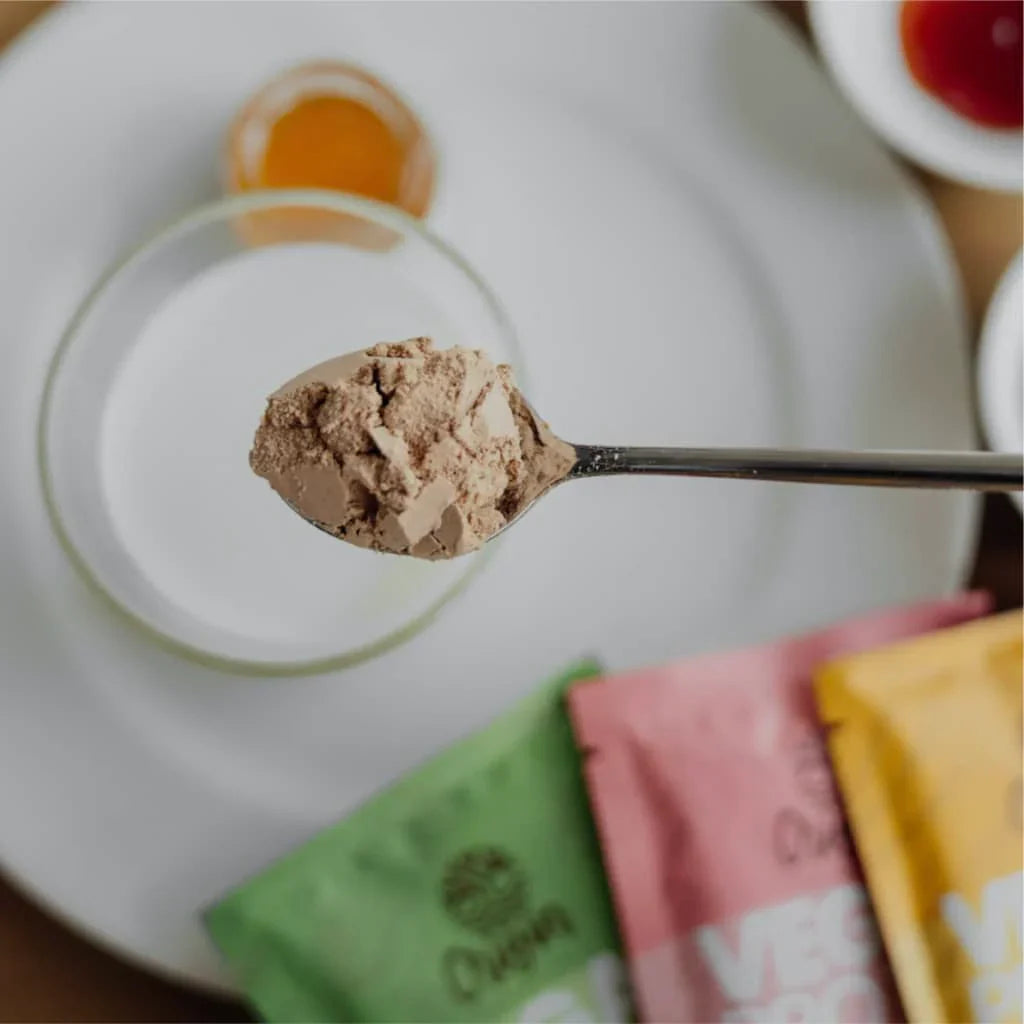
Protein - How much do you need?
You don’t have to be into fitness to know that protein is important for your body. They’re the
building blocks of our system and are used by our bodies as regulators, helps to build muscle
and bone, as well as produce energy, enzymes and hormones.
The big question is how much do you need?
According to the Recommended Dietary Allowance (RDA), we need 0.8 gms of protein per
kilogram of body weight. This is the minimum amount required to meet your body’s basic
needs to keep you from getting sick. This amount also increases depending on your level of
physical activity, for instance if you are doing intense workouts, your age, and if you’re
pregnant or breastfeeding.
Studies recommend:
●1.0 g of protein per kg of body weight with minimal activity levels
●1.3 g of protein per kg of body weight with moderate activity levels
●1.6 g of protein per kg of body weight with intense activity levels
The Recommended Dietary Allowance for protein is as follows:
| Life Stage & Gender | RDA in grams per day |
| Infants & Children | |
| 0 – 5 months | 9.1 |
| 6 – 12 months | 11.0 |
| 1 – 3 years | 13.0 |
| 4 – 8 years | 19.0 |
| Males | |
| 9 -13 years | 34.0 |
| 14 – 18 years | 52.0 |
| 19 -70 years and older | 56.0 |
| Females | |
| 9 -13 years | 34.0 |
| 14 – 70 years and older | 46.0 |
| Pregnant or breastfeeding |
| Life Stage & Gender | RDA in grams per day |
| All Ages | 71.0 |
So how much protein do you eat?
The Dietary Guidelines for Americans 2020 – 2025 suggests that in adults over 19 years old,
10 – 35% of their daily calories needs to be protein while children between 4 – 18 need 10 –
30% of protein daily.
Breaking this down, one gram of protein contains approximately 4 calories. So on a 2000
calorie diet you will need 50 – 150 gms of protein in your diet or 200 – 600 calories.
Breaking it down further,
– Figure out how many calories you’re likely to consume in a day. Eg: 2000 calories
-Choose the percentage of protein in your diet. Eg: 20%
-Multiply the total calories by the percentage: Eg 20% x 2000 = 400 calories
-Divide this by 4 to get the total grams Eg: 400 / 4 = 100 gms
That’s a lot of math, is there an easier way to calculate this???
Funny you should ask, of course there is! You can always use an online calculator like this
one – DRI Calculator
Here’s also a little cheat sheet to help you figure out the amount of protein in your food. This
is on average, reading the labels is always recommended.
| Food | Protein Amount |
| Milk (1 cup / 226 gms) | 8 gms |
| Eggs (1 large / 50 gms) | 6 gms |
| Meat (1 slice / 56 gms) | 14 gms |
| Seafood (56 gms) | 16 gms |
| Bread (1 slice / 64 gms) | 8 gms |
| Corn (1 cup / 166 gms) | 16 gms |
| Rice (1 cup / 195 gms) | 5 gms |
| Dry Bean (1 cup / 92 gms) | 16 gms |
| Nuts (1 cup / 92 gms) | 20 gms |
| Fruits / Vegetables (1 cup ) | 0 – 1 gm |
| Pizza (1 slice / 107 gms) | 12 gms |
However, it is also important to keep a check on the type of protein you consume. Too much
red meat, for instance, can lead to cholesterol, fat, high blood pressure and heart issues. One
way to make sure you’re getting adequate clean protein, while measuring the quantity
required is through protein powder. There are several great sources of protein powder in the
market, and they come in a range of flavours as well as unflavoured. You can also go with
brands like Origin Nutrition that have the added benefit of being vegetarian and vegan.
References:
https://www.health.harvard.edu/blog/how-much-protein-do-you-need-every-day-2015061880
96
https://www.medicalnewstoday.com/articles/how-much-protein-should-i-eat-a-day#protein-s
ources
https://www.nal.usda.gov/legacy/fnic/dri-calculator/